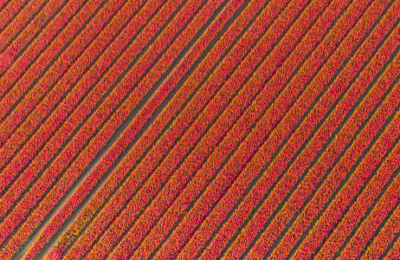News, insight, events and case studies
-
Insight

How data-centric laboratory information systems create new value, using your laboratory’s own data
Data is an asset with value laboratories can’t afford to overlook. Read how your LIS or LIMS must put data at the center of your enterprise architecture.
25 March 2024
-
Insight

Why equipping scientists to harness digitalization is key to driving laboratory innovation
Digital transformation can deliver significant benefits for laboratories and their customers, but success requires more than simply buying the latest technology.
13 March 2024
-
Insight
A day in the life of Carol Ross, Director, Product Management, Clinisys
We had a quick catch up with Carol Ross, Director of Product Management at Clinisys US. Carol has been a health-tech professional for almost 20 years and joined Clinisys US team one and half years back. In her long career Carol has witnessed a major transformation in the laboratory technology space and she is extremely passionate about the future of lab tech in the coming years.
6 March 2024
-
Insight
Three ways to successfully scale your toxicology laboratory
Increasing the efficiency and throughput of testing from order capture to instrument are front-of-mind for any toxicology laboratory. Without the right systems and processes in place, achieving scale and flexibility can prove challenging.
5 March 2024
-
Insight
Losing sleep over the cyber security nightmare? Find reassurance in the Clinisys approach
Chief technology officer, Shay Hassidim, and CIO/CISO, Jacques Le Roux, sat down to discuss Clinisys’ cybersecurity posture and the strategy it is developing for the near-future of cloud-hosted, SaaS based systems. We asked them to start by setting out the challenge.
27 February 2024
-
Insight

Selecting lab software: Are you asking the right questions?
Avoid the unintended consequences of shopping for an LIS or a LIMS that come from focusing on features. There’s a better way to select a laboratory information system.
30 January 2024
-
Insight
Why PFAS, so called ‘forever chemicals’, are driving change in sample management
Analytical testing laboratories are investing to expand PFAS testing services to clients across multiple industries, including food & beverage, consumer products, water quality, and agriculture.
29 January 2024
-
Insight

Pitfalls and payoffs of moving your laboratory to the cloud
Consumers are embracing the cloud in their daily lives, and businesses are increasingly following suit. With more laboratories moving to the cloud, Imogen Fitt from Signify Research, outlines the opportunities and challenges that lie ahead.
23 January 2024
-
Insight

How a LIMS enhances environmental monitoring
Demand for more advanced software systems for monitoring and testing water, soil, and air quality is growing rapidly. Enabling analytical testing laboratories to meet these needs requires advanced tools that enhance environmental monitoring and compliance.
19 December 2023
-
Insight

How to put quality first in environmental and water laboratories
Quality assurance and control measures are essential for environmental and water testing laboratories to ensure accurate and reliable data.
9 October 2023
-
Insight

7 requirements for a successful LIMS implementation project
Implement your LIS or LIMS software on time and on budget when you follow these seven non-technical tips from our project management experts.
25 September 2023
-
Insight

The case for not outsourcing the lab
With hospitals under sustained financial pressures since the global pandemic, cash-strapped and distressed hospitals may consider outsourcing laboratory services as a means of cutting costs—a potentially “penny-wise, but pound-foolish” decision.
21 August 2023












